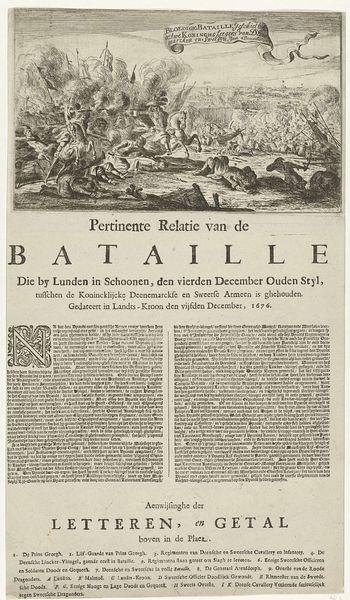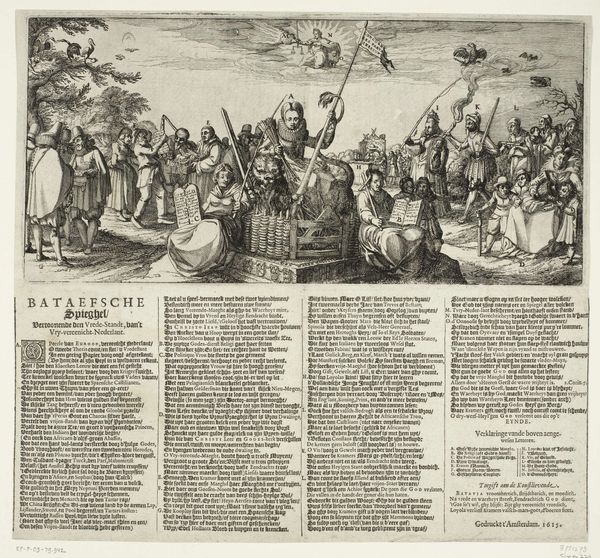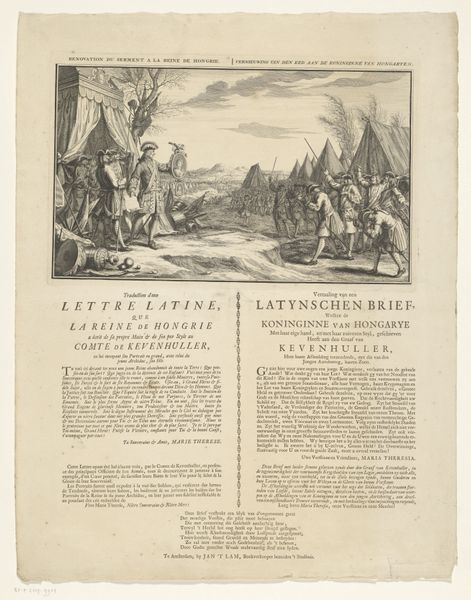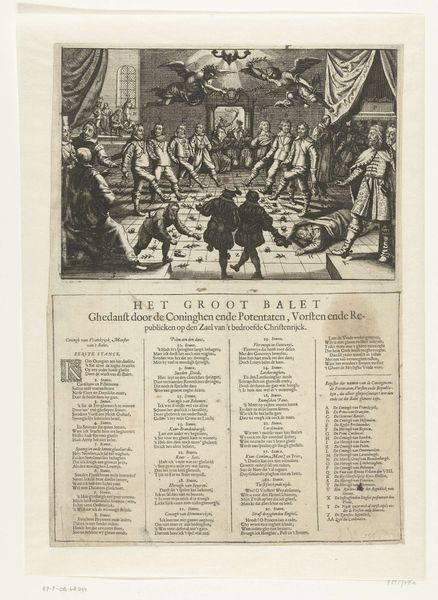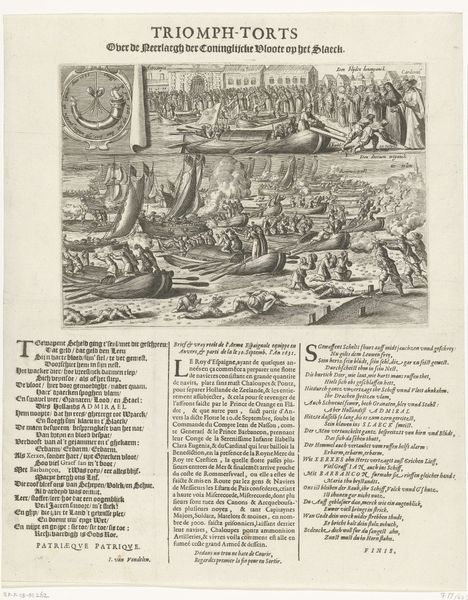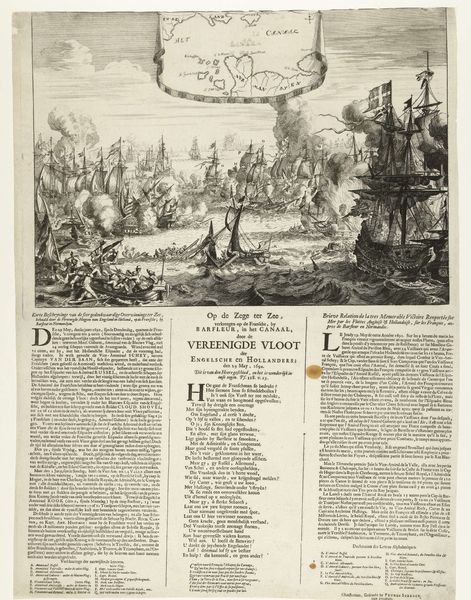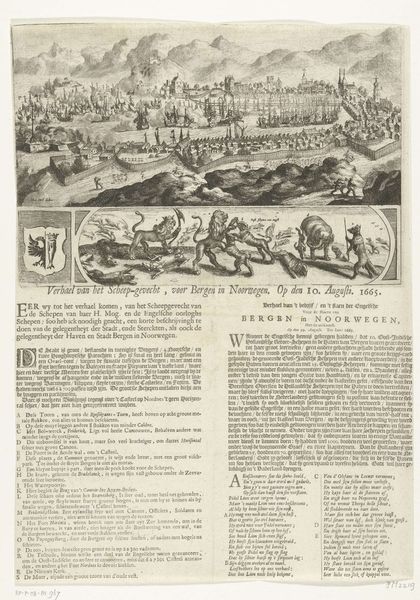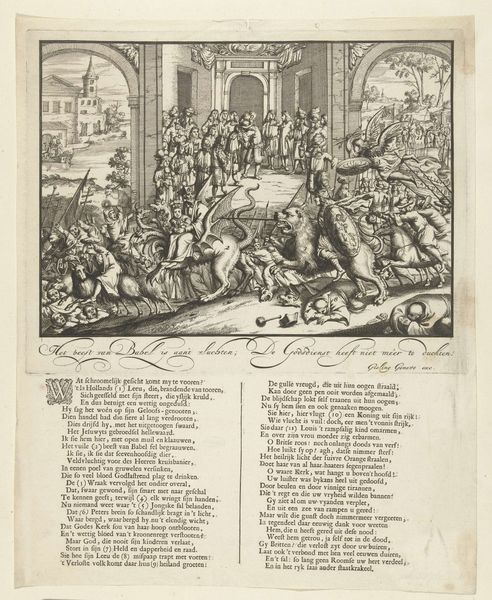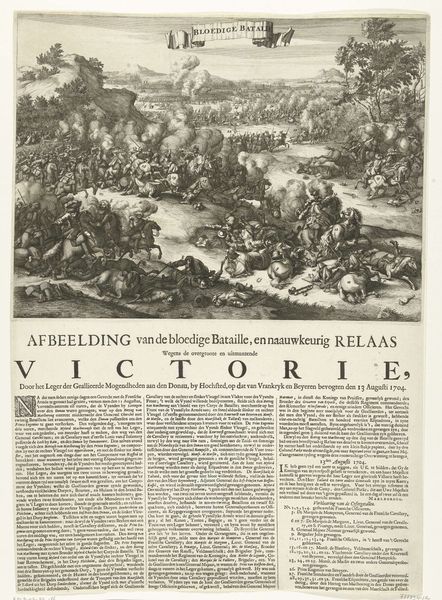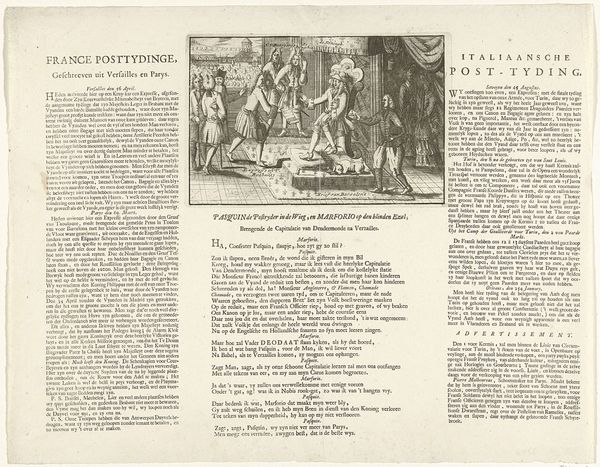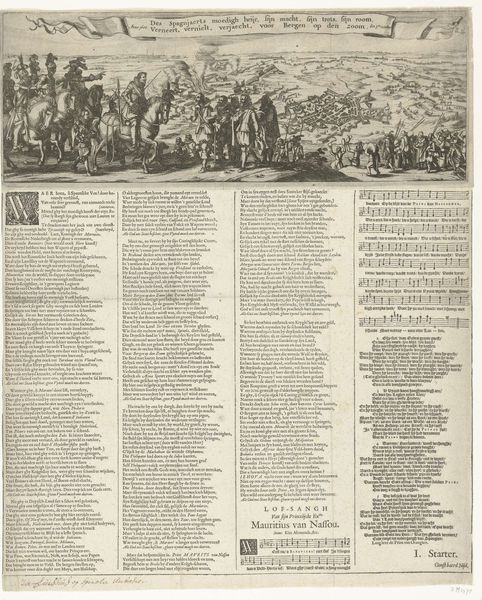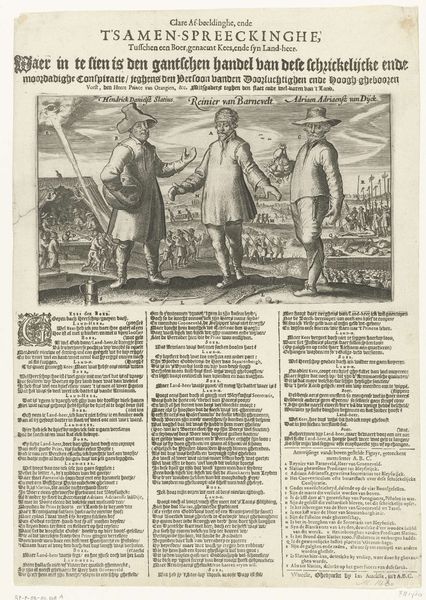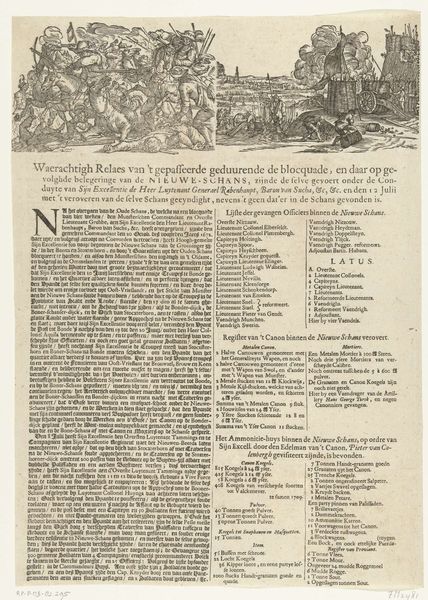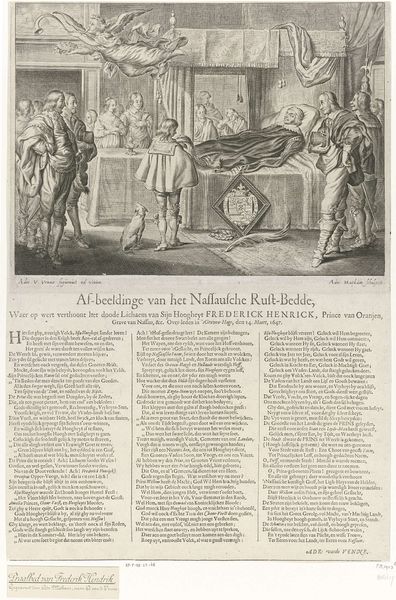
print, engraving
#
allegory
#
baroque
# print
#
history-painting
#
engraving
Dimensions: height 550 mm, width 418 mm
Copyright: Rijks Museum: Open Domain
Curator: So, let’s consider this print, “Allegory on the Ratification of the Peace of Breda, 1667” by Salomon Savery. The Rijksmuseum holds it. Look at how detailed the engraving is; it almost feels like a photograph of an actual event despite its allegorical style. What stands out to you? Editor: I am really struck by the sheer density of imagery. The ships in the background, the figures in the foreground, the text filling up half the print. What kind of production process allowed for such a work? How would you even begin to approach understanding something like this? Curator: Focusing on its production helps us understand the cultural landscape. Consider the copperplate engraving itself. This was a repeatable medium, one intended for relatively wide circulation. We are looking at the output of an artisan’s labor, something made to disseminate a specific political message rapidly. Now, look at how the print attempts to marry 'high art' – allegory – with legible textual arguments. How does this interplay influence your view of the subject matter, namely, peace? Editor: Interesting. So the very act of creating it, the choice of printmaking, emphasizes its message: peace not as some divine idea but something crafted, something delivered in a repeatable, almost industrial manner, that would reach far and wide and to influence public thinking and acceptance. How much would an artwork like this cost? And would everyday people understand all the symbols in this allegory? Curator: Good questions. Consider then: its availability made the political message consumable. This was not just an aesthetic object but a persuasive artifact designed to shape public opinion in a society increasingly influenced by print media. This print, thus, blurred the boundaries between propaganda and artistic expression. It certainly opens us up to reflect about its societal influence. Editor: I’ve never considered a piece of art this way before. Seeing it as a physical manifestation of labor, choices in material, and a calculated way of communicating a very specific message really changes how I interpret the image. Curator: Indeed. Examining the means of production, distribution, and even reception reveals so much about its context and lasting influence.
Comments
No comments
Be the first to comment and join the conversation on the ultimate creative platform.
